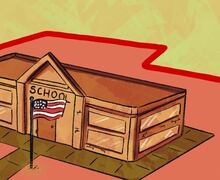Tuition likely to continue rising for foreseeable future due to rising costs at universities
Jordan Phelps | Contributing Photographer
SU’s tuition will rise 3.9 percent for the 2017-18 academic year, marking the eighth consecutive year that tuition will go up between 3.5 and 4 percent.
Syracuse University’s recent decision to hike tuition for the 2017-18 academic year was part of a national trend that experts said is likely to continue in the years ahead.
Annual increases in tuition at private universities such as SU can be largely attributed to the rising costs of running a university, experts said. And with those high costs unlikely to slow down in the coming years, tuition hikes are also likely to continue for the foreseeable future, according to experts.
SU’s tuition will rise 3.9 percent for the 2017-18 academic year, marking the eighth consecutive year that tuition will go up between 3.5 and 4 percent. That fits a national trend, with tuition having risen by an average of 2.4 percent — not counting for inflation — at private nonprofit four-year universities between the 2006-07 and 2016-17 academic years.
Donald Heller, the provost and vice president of academic affairs at the University of San Francisco, has studied tuition increases. He said the biggest reason for such increases is college’s increasing costs, with faculty and staff salaries serving as the top cause of those increases. That’s particularly the case at private universities, as tuition hikes at public universities can be attributed mostly to cuts in state funding, experts said.
“People expect a raise every year,” Heller said. “… If your expenses are going up, for most private universities especially, the main way you meet those rising costs is through tuition revenue.”
The universities’ facility cost is also heavy contributors to the rising tuition costs, experts said. At SU, renovations costing about $250 million are planned for the aging Carrier Dome and Archbold Gymnasium as part of the university’s Campus Framework plan.
Other notable expenses include the cost of operating buildings, energy costs and equipment costs, said Mark Kantrowitz, the publisher of Cappex.com, a website that assists students in paying for college.
Kantrowitz added that those costs tend to increase at a rate faster than the rate of inflation, which he said explains why tuition costs generally increase at faster rates than inflation.
“Inflation, the consumer price index … is a basket of goods and services that are used by people: food, clothing, housing, medical care, insurance, all that stuff,” he said. “College expenses … tend to be a mix that goes up faster than the consumer price index.”
In addition to increases in tuition rates, colleges and universities also generally increase the financial aid they award every year. When SU announced the increased tuition for the 2017-18 academic year, it also announced that it will increase financial aid by 4.8 percent.
Kantrowitz said there’s a “myth” that the increases in financial aid cause the increases in tuition. Instead, he said the opposite is true.
“The increases in student aid make the college affordable, despite the increases in college costs,” he said. “If you were to keep financial aid flat or reduce it, you would cause problems with students being able to afford tuition.”
Some students, though, already have difficulty affording tuition, experts said.
“In some cases, whether it’s public or private, some of these schools are charging more than the annual salaries of families,” said David Levy, the editor of Edvisors, a financial aid website. “And that frightens families.”
If tuition continues to go up to the point that a significant number of students are unable to afford college, that could cause more and more colleges to fail and shut down, Kantrowitz said. Currently, about one or two colleges fail annually, he said, and usually those schools aren’t well known.
Within a few decades, though, five or six colleges might fail per year, Kantrowitz said.
But given the expenses that come with higher education, universities can’t afford to not raise tuition, experts said.
Said Heller: “Going forward, I don’t see any reason why you’re not going to see tuition increases every year.”
Published on April 3, 2017 at 11:30 pm
Contact Michael: mdburk01@syr.edu





